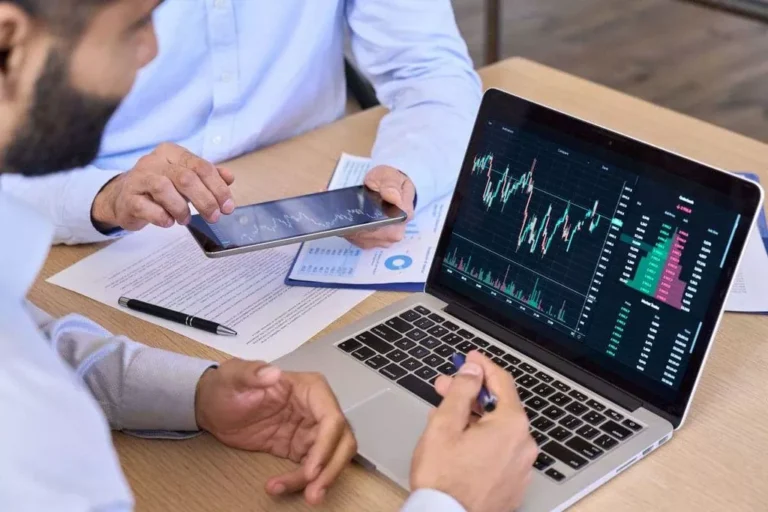As a result, specific tags could be selected to provide a wide variety of analyses. IXBRL (Inline XBRL),3 the iteration of XBRL utilized in this paper, facilitates disaggregation and aggregation at any point in time at any level of detail (Philip, 2013; CFA Institute, 2017). With machine-readable tags which make grouping elements easier, the system is also able to output a variety of visualization schemes and interactive data programs.

Generally, the practice of front-running can be considered illegal depending on the circumstances and is heavily regulated by the Financial Industry Regulatory Authority (FINRA). The strategy will increase the targeted participation rate when the stock price moves favorably and decrease it when the stock price moves adversely. Volume -weighted Average Price strategy breaks up a large order and releases dynamically determined smaller chunks of the order to the market using stock-specific historical volume profiles. Robo advisors use investment algorithms and massive amounts of data on a digital platform. Investments are framed through Modern Portfolio theory, which typically endorses long term investments to maintain consistent returns, and requires minimal interaction with human financial advisors. The vast proliferation of data and increasing technological complexities continue to transform the way industries operate and compete.
The flexibility of cloud computing allows traders to adapt their resources based on demand, optimizing costs and performance. An algorithmic trading platform is a software application that allows traders to develop, backtest, and deploy algorithmic trading strategies. Algorithmic trading platforms can be used to trade a variety of financial instruments, including stocks, bonds, https://www.xcritical.in/ currencies, commodities, derivatives, and cryptocurrencies. Rapid advances in technology have paved the way for the collection of unprecedented volumes of data. Currently, the slow speed of information dissemination, laggard accounting systems, and a focus on high levels of aggregation are perhaps the largest contributors to waning relevance of financial reporting.
Platforms like Quantiacs have sprung up in order to serve day traders who wish to try their hand at algorithmic trading. Traders looking to work across multiple markets should note that each exchange might provide its data feed in a different format, like TCP/IP, Multicast, or a FIX. Another option is to go with third-party data vendors like Bloomberg and Reuters, which aggregate market data from different exchanges and provide it in a uniform format to end clients. The algorithmic trading software should be able to process these aggregated feeds as needed.
It will take trading and investing to a new platform with more accurate and systematic forecasting analysis. The standard deviation of a stock’s recent prices indicates whether to buy or sell. One way is that big data helps make better models for determining what will happen in the market. In previous days investment researches were done on day-to-day basis information and patterns. Now the volatilities in market are more than ever and due to this risk factor has been increased. RBI interests rates, key governmental policies, news from SEBI, quarterly results, geo-political events and many other factors influence the market within a couple of seconds and hugely.
By continuously adapting and improving their models, traders can stay ahead in the ever-changing market landscape. Emergence of Big Data Analytics in Algorithmic Trading The integration of Big Data analytics in algorithmic trading began in the early 2000s. Traditional trading models evolved to incorporate predictive analytics, data mining, and machine learning algorithms, allowing traders to gain deeper insights into market trends and make data-driven decisions. There are tons of investment gurus claiming to have the best strategies based on technical analysis, relying on indicators like moving averages, momentum, stochastics and many more.

Using above two simple instructions, a computer program will automatically monitor the stock price (and the moving average indicators) and place the buy and sell orders when the defined conditions are met. In recent years, the practice of do-it-yourself algorithmic trading has become widespread. Hedge funds like Quantopian, for instance, crowd source algorithms from amateur programmers who compete to win commissions for writing the most profitable code. The practice has been made possible by the spread of high-speed internet and the development of ever-faster computers at relatively cheap prices.
- Addressing these challenges is crucial to maximizing the potential of Big Data in algorithmic trading.
- A special class of algo traders with speed and latency advantage of their trading software emerged to react faster to order flows.
- Second, these algorithms can be tested with big data before they are used in trading.
- If you were to test this strategy during the dotcom boom years in the late 90s, the strategy would outperform the market significantly.
- When computer processing power increased, algorithmic trading became synonymous with large amounts of data.
Algorithmic trading strategies can be constructed using a solid base in data science and AI. Skilled professionals are essential for designing, testing, and monitoring algorithms. Additionally, human intervention may be necessary for extreme market volatility when algorithms encounter unforeseen challenges. Learning how to incorporate AI concepts in financial markets will open doors to opportunities for algorithmic trading.
Its ability to process vast data, execute trades at remarkable speeds, and manage risk effectively has reshaped the financial landscape. The power of algorithms is immense, but so are the responsibilities accompanying it. The concerns surrounding market fairness and stability demand our unwavering attention, just as the potential for efficiency and opportunity beckons us toward a bold new frontier. As we study the importance of algorithmic trading, the partnership between human expertise and AI innovation will continue to define the trajectory of finance in the digital age.
When it comes to algorithmic trading, big data can help in many different ways. The portfolios of index funds, which are a type of mutual fund, are updated regularly to reflect the new prices of the fund’s underlying assets, such as stocks and bonds. “Data mining” is a common strategy that involves searching a lot of data to find hidden patterns or trends. Then, this information can be used to predict how the market will move and develop trading plans based on those predictions.
Following the 4 V’s of big data, organizations use data and analytics to gain valuable insight to inform better business decisions. Industries that have adopted the use of big data include financial services, technology, marketing, and health care, to name a few. The adoption of big data continues to redefine the competitive landscape of industries.
These colossal datasets, when harnessed efficiently, open avenues for unparalleled market insights and trading strategies. Most algorithmic trading software offers standard built-in trade algorithms, such as those based on a crossover of the 50-day moving average (MA) with the 200-day MA. A trader may like to experiment by switching to the 20-day MA with the 100-day MA. Unless the software offers such customization of parameters, the trader may be constrained by the built-ins fixed functionality. Whether buying or building, the trading software should have a high degree of customization and configurability. All trading algorithms are designed to act on real-time market data and price quotes.
For example, say, a trader wants to test a strategy based on the notion that Internet IPOs outperform the overall market. If you were to test this strategy during the dotcom boom years in the late 90s, the strategy would outperform the market significantly. However, trying the same strategy after the bubble burst would result in dismal returns. The maxim ‘past performance does not necessarily guarantee future returns’ has to big data in trading be kept into consideration while back testing a trading strategy. This algorithm is completely based on dual listed stock price in one market and simultaneously selling it at a higher price in another market offers a different price as a risk free profit. The speed of order execution, an advantage in ordinary circumstances, can become a problem when several orders are executed simultaneously without human intervention.



No comments yet.